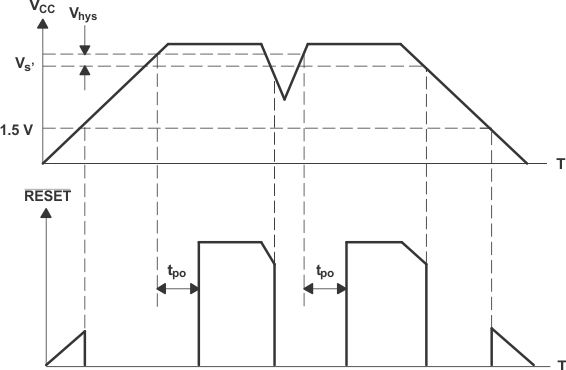SLVSF13A March 2019 – August 2021 TL7700-SEP
PRODUCTION DATA
- 1 Features
- 2 Applications
- 3 Description
- 4 Revision History
- 5 Pin Configuration and Functions
- 6 Specifications
- 7 Parameter Measurement Information
- 8 Detailed Description
- 9 Application and Implementation
- 10Power Supply Recommendations
- 11Layout
- 12Device and Documentation Support
- 13Mechanical, Packaging, and Orderable Information
Package Options
Mechanical Data (Package|Pins)
- PW|8
Thermal pad, mechanical data (Package|Pins)
Orderable Information
8.3.2 Sense-Voltage Hysteresis Setting
If the desired sense voltage (Vs') does not have hysteresis in it and the voltage on the sensing line contains ripples, the resetting of TL7700-SEP will be unstable. Hysteresis is added to the sense voltage to prevent such problems. As shown in Figure 8-2, the hysteresis (Vhys) is added and the value is determined as:
Equation 2. Vhys = Is × R1
where
- Is = 1 μA to 3.5 μA over temperature range

The desired sense voltage (Vs') is different from the SENSE input voltage (Vs). Vs is typically 500 mV for triggering.
Figure 8-2 VCC-RESET Response